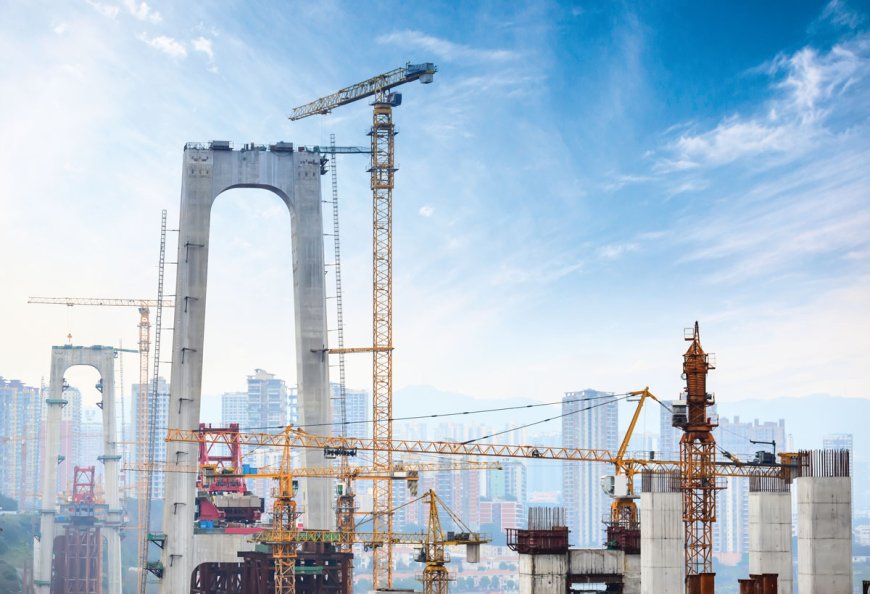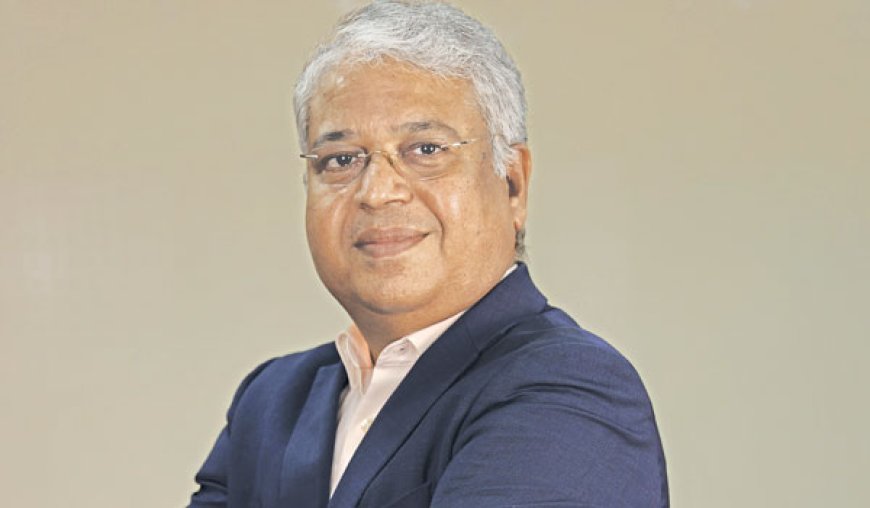Tower Cranes: Powering India’s Vertical Growth

Tower cranes are not just towering machines but essential enablers of India's infrastructure growth. With a robust market outlook and a commitment to technological progress, these cranes will remain at the forefront of transforming India’s skyline, one construction project at a time.
Equipment Times explores the demand, current market trends, features or models, automation, digitalization, or remote-control, major challenges, safety and compliance, after-sales support and training and skill development in the Tower Crane sector.
As India continues to expand its urban footprint and build a resilient infrastructure network, the construction industry is witnessing an unprecedented surge in the use of modern equipment. Tower cranes, standing tall at construction sites, have become iconic symbols of this booming sector. Their pivotal role in accelerating the progress of urban development, high-rise buildings, and large-scale infrastructure projects cannot be overstated. From enhancing operational efficiency to ensuring safety, tower cranes have revolutionized construction techniques in India.
The Growing Market Demand for Tower Cranes
The rapid pace of urbanization in India has led to a tremendous demand for high-capacity, reliable, and technologically advanced tower cranes. According to industry reports, the construction sector’s steady growth, spurred by ambitious government projects like the Smart Cities Mission, Bharatmala, and Pradhan Mantri Awas Yojana, has driven the need for efficient material handling and equipment solutions. The market for tower cranes is projected to witness double-digit growth as developers focus on vertical construction to optimize space in crowded urban areas.
Real estate developers and infrastructure companies are increasingly adopting tower cranes to streamline their construction processes. These cranes offer significant advantages, such as reducing labor dependency and improving project timelines. The high load-lifting capacity of tower cranes allows for the efficient movement of heavy materials, which is especially crucial for constructing tall structures and sprawling industrial facilities. Rapid urbanization and the expansion of cities have led to a surge in large-scale infrastructure projects. Tower cranes are essential for constructing tall buildings, skyscrapers, and complex projects that require high lifting capacities and the ability to work at great heights. As urban populations grow, the demand for residential, commercial, and mixed-use high-rise buildings has skyrocketed. Tower cranes provide the required lifting and hoisting capabilities to build such structures efficiently.
Modern tower cranes come equipped with advanced features such as wireless controls, automated systems, and enhanced safety mechanisms, which have made them more attractive to construction companies. These technologies improve productivity, reduce labor costs, and enhance safety on construction sites. Tower cranes are preferred for their ability to lift heavy loads at high altitudes with precision, ensuring safer operations in comparison to other types of cranes. This is particularly crucial for high-rise construction projects where safety and operational efficiency are paramount.
In emerging economies, rapid development of infrastructure, residential complexes, and commercial buildings has fueled demand for tower cranes. These regions often have a shortage of skilled labor, and tower cranes help streamline construction processes, reducing reliance on manual labor.
With the increasing demand for faster project completion times, tower cranes enable construction to proceed more quickly by lifting and positioning materials efficiently, reducing delays and overall construction time.
The rise of the construction equipment rental market has also contributed to the growing demand for tower cranes. Many construction companies prefer renting tower cranes for specific projects, which helps reduce their capital expenditures and increase flexibility.
The construction industry's increasing focus on sustainability and green building practices has also impacted the demand for tower cranes. Efficient and safe construction practices, including the use of advanced tower cranes, are critical to meeting environmental standards and reducing construction waste.
The growing demand for tower cranes reflects the construction industry's expansion, the trend toward larger and more complex projects, and the desire for greater safety, efficiency, and sustainability in construction processes.
Technological Advancements in Tower Cranes
The technological evolution in tower cranes has been a game-changer for the construction industry. Manufacturers are investing heavily in research and development to introduce innovations that address safety, efficiency, and sustainability concerns. The integration of smart features, such as anti-collision systems, automated lifting operations, and real-time monitoring, has significantly enhanced the safety and productivity of construction sites. Additionally, the adoption of remote-control operations and data analytics has empowered project managers to make data-driven decisions, improving the overall workflow.
The development of flat-top cranes, luffing jib cranes, and hammerhead cranes has catered to the diverse needs of construction projects in India. For instance, luffing jib cranes are ideal for congested urban environments where space constraints make traditional crane operations challenging. Meanwhile, self-erecting tower cranes are gaining traction in the mid-rise construction segment, thanks to their ease of assembly and disassembly.
Safety and Training Initiatives
While tower cranes have become indispensable assets in construction, safety remains a top priority. Operating these massive machines requires specialized skills and rigorous training. Construction companies are increasingly investing in operator training programs and safety workshops to minimize risks and ensure smooth project execution. The adoption of global safety standards and adherence to the guidelines set by regulatory authorities, such as the National Safety Council (NSC) and the Occupational Safety and Health Administration (OSHA), have bolstered the safety ecosystem.
Manufacturers are also playing a crucial role in promoting safety by incorporating fail-safe mechanisms, load moment indicators, and wind speed sensors into their cranes. These features are designed to prevent accidents and enhance the stability of cranes, even under challenging weather conditions.
The Challenges of Tower Crane Operations in India
Despite the numerous benefits, tower crane operations in India are not without challenges. One major hurdle is the lack of adequate infrastructure and logistical support in certain regions. Transporting and erecting these cranes in remote areas or congested urban zones can be complex and costly. Moreover, fluctuating steel prices and supply chain disruptions pose challenges for both manufacturers and contractors.
Another pressing issue is the availability of skilled crane operators. As the demand for tower cranes rises, there is a growing need to bridge the skills gap in the construction workforce. Collaboration between construction companies, equipment manufacturers, and government bodies is crucial to address this challenge and ensure that training programs keep pace with industry requirements.
Sustainability: The Future of Tower Cranes
Sustainability is becoming a core focus area for the construction equipment industry, and tower cranes are no exception. Manufacturers are exploring eco-friendly solutions, such as electric and hybrid-powered cranes, to reduce carbon emissions and minimize environmental impact. These sustainable cranes offer reduced noise levels and energy consumption, aligning with India’s commitment to achieving net-zero emissions by 2070. Furthermore, digital solutions are being developed to monitor and optimize energy usage, making crane operations more environmentally responsible.
The future of tower cranes in the context of sustainability is shaping up to include a variety of innovations that aim to reduce their environmental impact while increasing efficiency and performance.
The future of tower cranes will be shaped by innovations that make them more energy-efficient, eco-friendly, and aligned with sustainable construction practices. This will require both technological advancements and a shift towards a circular economy approach within the industry.
Future Outlook
The future of tower cranes in India looks promising, driven by continuous urbanization, infrastructure development, and technological innovation. As construction projects become more complex, the demand for high-performance tower cranes will continue to grow. The focus on smart construction, sustainability, and operator safety will drive further advancements in crane technology, shaping the future of the construction equipment industry.
Industry speaks

V.G. Sakthikumar, CMD, Schwing Stetter India, said, “The demand for tower cranes has seen significant growth in recent years, especially in urban construction and large-scale infrastructure projects. Rapid urbanization, the need for high-rise buildings, and the push for better infrastructure in metros are key drivers of this demand. Tower cranes are indispensable for vertical construction, particularly in cities with space constraints. The market is also being shaped by advancements in construction technology, such as the integration of modular construction methods and the increasing focus on speed, efficiency, and sustainability in projects. This has led to the growing demand for more powerful, high-capacity, and technologically advanced cranes, such as SCHWING-XCMG’s range of tower cranes, which are built to meet the dynamic needs of urban construction environments.”

Mayank Pundir, Country Head, ACE Tower Cranes Division, said, “India’s construction industry presents a unique set of challenges, such as space constraints in urban areas, budget limitations, and a need for flexibility due to varied project sizes. Understanding these needs, ACE has developed models specifically designed to cater to the Indian market. One of our standout models, the ACE FT 5534, is a perfect fit for urban projects. This model is compact, and ideal for high-rise construction. Its smaller footprint allows it to function in congested spaces without compromising on performance. Additionally, its ability to handle heavy loads and operate with high precision makes it suitable for infrastructure projects like metro construction and bridge-building. Another model, the ACE TC 7054, offers higher load capacities and flexibility in terms of configuration, making it well-suited for industrial and large-scale infrastructure projects. These cranes have been developed keeping in mind the specific needs of Indian contractors, providing both cost-effectiveness and versatility to handle various construction challenges.”








